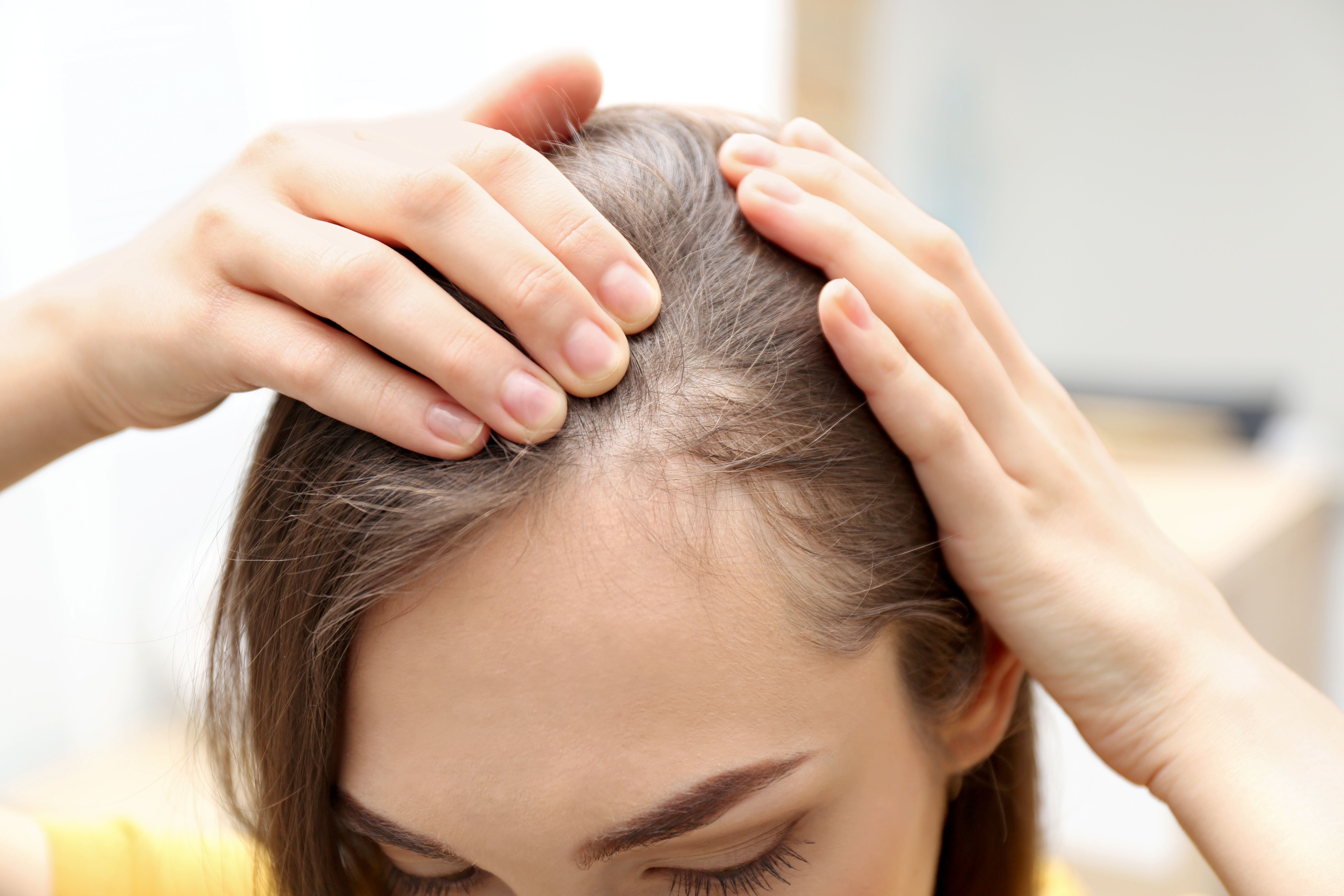- Acne
- Actinic Keratosis
- Aesthetics
- Alopecia
- Atopic Dermatitis
- Buy-and-Bill
- COVID-19
- Case-Based Roundtable
- Chronic Hand Eczema
- Chronic Spontaneous Urticaria
- Drug Watch
- Eczema
- General Dermatology
- Hidradenitis Suppurativa
- Melasma
- NP and PA
- Pediatric Dermatology
- Pigmentary Disorders
- Practice Management
- Precision Medicine and Biologics
- Prurigo Nodularis
- Psoriasis
- Psoriatic Arthritis
- Rare Disease
- Rosacea
- Skin Cancer
- Vitiligo
- Wound Care
News
Article
Minoxidil-Spironolactone Therapy Effective in Treating Hair Loss in Women
Author(s):
Topical minoxidil combined with oral spironolactone significantly improved hair density.
A study found the combination of topical minoxidil with oral spironolactone was effective in treating androgenic alopecia (AGA) in women without adverse events.1 Patient satisfaction regarding hair density and severity of hair loss was high among participants.
New Africa/AdobeStock

In the single-blind, randomized clinical trial, researchers followed 60 female patients ages 15 to 45 years with AGA who were treated with either topical minoxidil 2% and oral spironolactone 100 mg a day, or topical minoxidil 2% and oral finasteride 5 mg a day. Participants were first divided into 2 equal groups of female pattern hair loss (FPHL) and male pattern hair loss (MPHL). Those groups were then randomly divided into 2 groups, receiving either the minoxidil-spironolactone therapy or the minoxidil-finasteride therapy.
Treatment lasted for 4 months, with follow-up examinations 2 months and 4 months after initiation of treatment. Treatment efficacy was evaluated using the Ludwig grade for FPHL and the Norwood-Hamilton grade for MPHL, as well as by physician satisfaction through clinical images using the physician global assessment score, and patient satisfaction with results.
Twenty (66.7%) of the minoxidil-spironolactone participants and 24 (80%) of the minoxidil-finasteride participants were married. No significant differences existed at baseline between the groups in terms of Ludwig grade, Norwood-Hamilton grade, and hair loss pattern.
Results at 2 Months
After 2 months of treatment, using the Norwood-Hamilton grade, 4 (26.7%) and 5 (33.3%) of participants were grade 2 in the minoxidil-spironolactone group and minoxidil-finasteride group, respectively. The drugs were ineffective in 2 cases in each group. In the minoxidil-spironolactone group, 15 (50%) patients responded well to treatment. In the minoxidil-finasteride group, 11 (36.7%) patients responded well.
In terms of FPHL and MPHL, response to the treatments was not significant at 2 months. Hair density was improved in 15 (50%) of participants in the minoxidil-spironolactone group and in 18 (60%) of the minoxidil-finasteride group.
Results at 4 Months
After 4 months of treatment, 12 (80%) patients in the minoxidil-spironolactone group and 11 (73.3%) patients in the minoxidil-finasteride group had a Norwood-Hamilton grade of 1. The treatment was ineffective in 2 participants in the minoxidil-spironolactone group and in 5 participants in the minoxidil- finasteride group. The effect of treatment was excellent in 8 (56.7%) of the patients in the minoxidil-spironolactone group, but 0 patients in the minoxidil-finasteride group exhibited excellent results. A significant difference in MPHL was seen in both groups.
Hair density significantly improved in the minoxidil-spironolactone group (70% of patients) compared to the minoxidil-finasteride group (33.3%). No statistical difference was observed between the 2 groups in terms of hair thickness. Hair loss improved in 16 (53.3%) of patients in the minoxidil-spironolactone group compared to 2 (6.7%) of patients in the minoxidil-finasteride group.
“Minoxidil-spironolactone could be considered as an effective treatment to improve AGA, female, and male hair loss patterns. Overall, treatment with minoxidil-spironolactone was better than treatment with minoxidil-finasteride for the female and male patterns of AGA,” Bazargan et al concluded.
Reference
- Sadeghzadeh Bazargan A, Tavana Z, Dehghani A, et al. The efficacy of the combination of topical minoxidil and oral spironolactone compared with the combination of topical minoxidil and oral finasteride in women with androgenic alopecia, female and male hair loss patterns: A blinded randomized clinical trial. J Cosmet Dermatol. 2023;00:1-9. doi:10.1111/jocd.15979
Newsletter
Like what you’re reading? Subscribe to Dermatology Times for weekly updates on therapies, innovations, and real-world practice tips.














